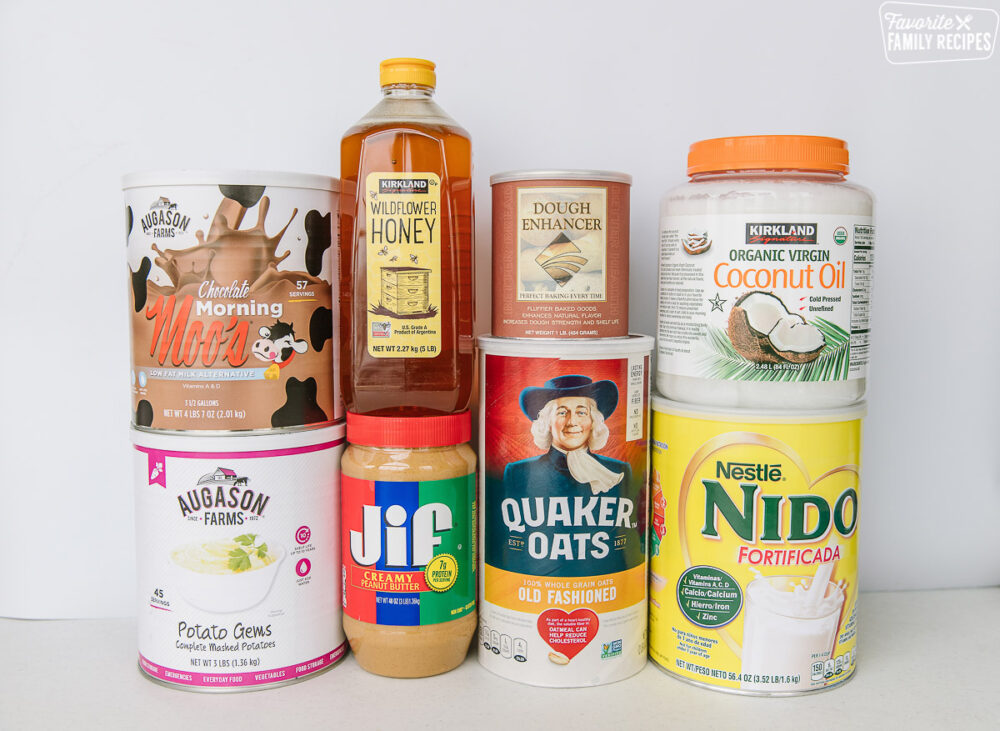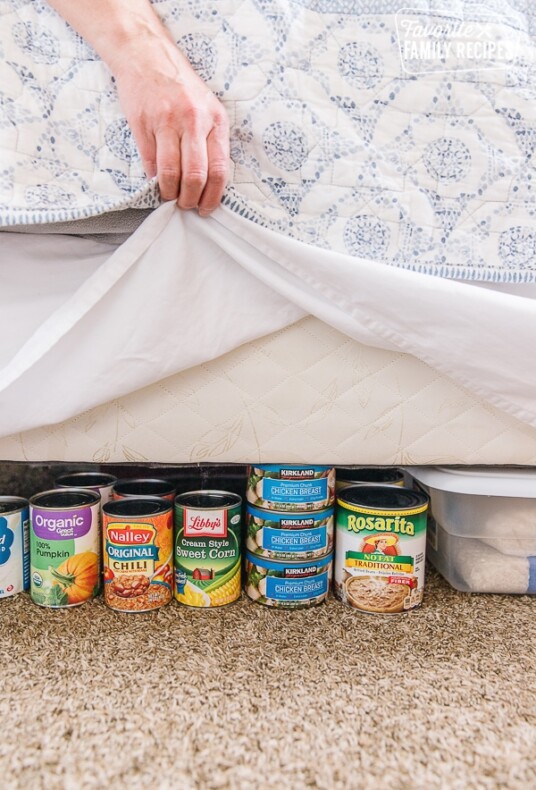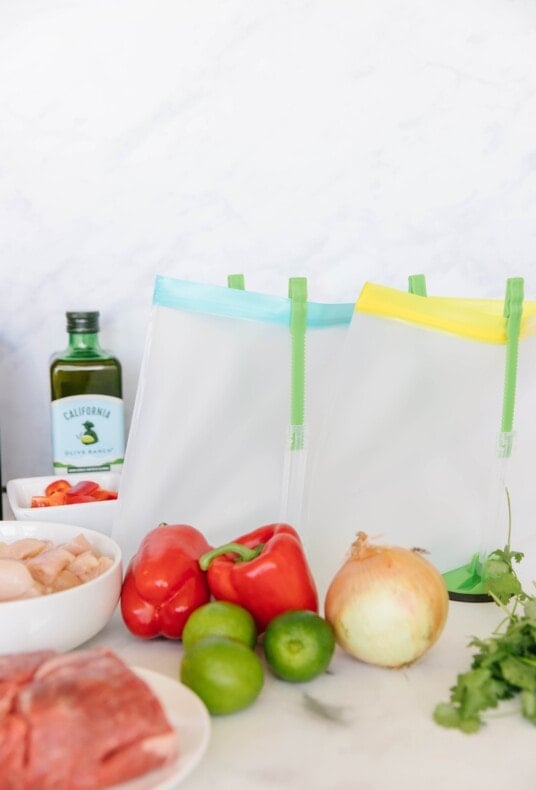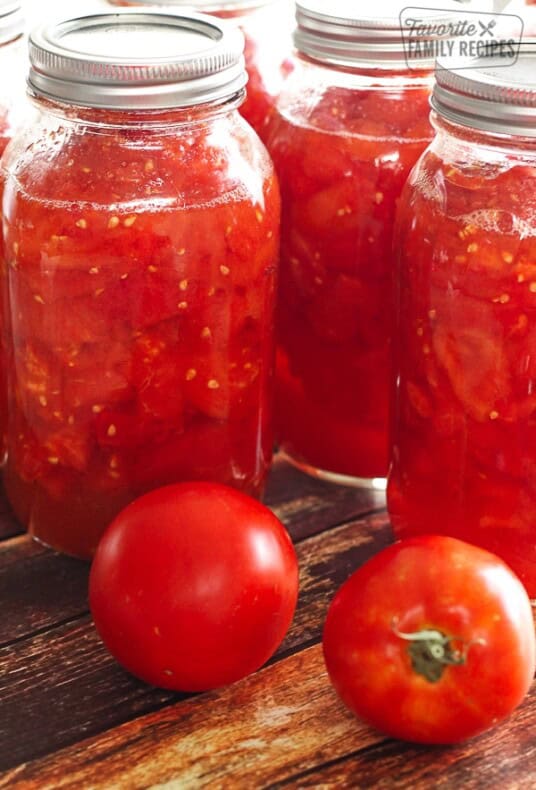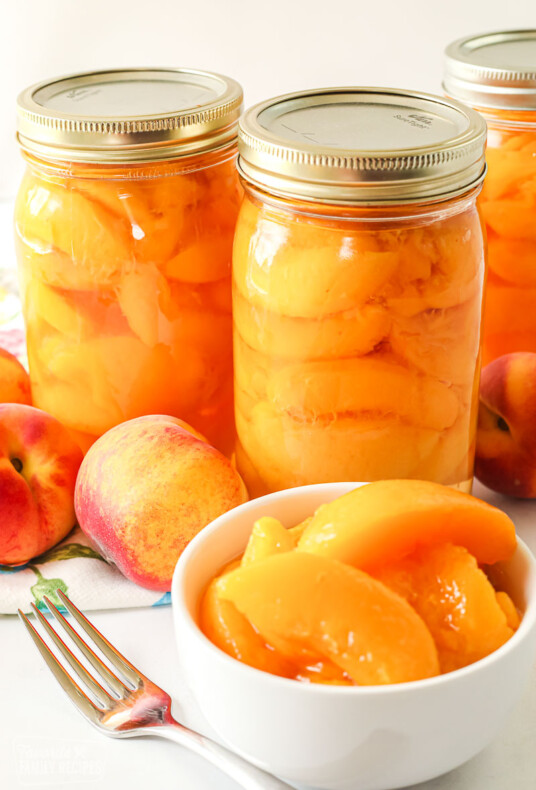This post may contain affiliate links. See our disclosure policy.
Recent events may have you taking stock of what (if any) food storage you have. If you’re worried about your supply, here are some easy ideas to gather, store and properly use long-term food storage. We are promoting preparedness, not hoarding. It has been a wise practice for centuries to store food for times of scarcity.
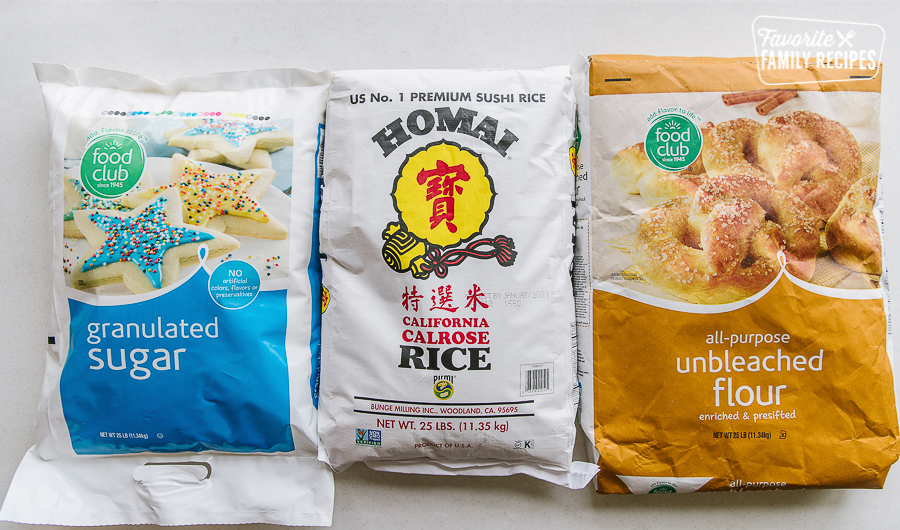
In the event of an unplanned emergency or a natural disaster, it is always a good idea to have an emergency food supply. As Benjamin Franklin said, “If you fail to plan, you plan to fail”. Planning for and creating emergency food storage will help you to be prepared and not caught off guard in the event of an unplanned emergency. There is no need to buy expensive survival food kits. You can create your own long term storage by shopping wisely and getting the right items from your local grocery store.
If you have gathered food for your 14 Day Shopping List and Meal Plan then you’re well on your way! Now may be the right time to take stock in a longer term food storage plan for your family. With a couple of convenient resources and a little planning you can rest easy knowing your family will be nourished in the longer term.
What Should I have in my Food Storage?
We took a lot of this good information from the Church of Jesus Christ of Latter Day Saints food storage guidelines. There are helpful tips there as you begin or continue your long term food storage supply. Basically, there are three main areas of food storage:
- Food Supply (three-month and long-term)
- Water Supply
- Financial Reserve
Long Term Food Storage Ideas
Make sure to store foods that your family actually eats, especially in your three month supply. That way you can use it and replenish as needed. Longer term storage is where you’ll want to utilize food staples such as wheat, pasta, rice, beans, oats, grains, and dried potato flakes. When properly packaged in vacuum-packed mylar bags and stored in a cool, dry place, these items can have a 25-year shelf life or more! Of course you can rotate them into your three month supply as well. Here are some more ideas and ingredients to have on hand for long term food storage:
- Whole grains (brown rice, whole wheat, wheat berries, barley, etc…)
- Pasta & white rice (macaroni, spaghetti noodles, and any variety of white rice)
- Beans & legumes
- Freeze-dried foods (if you vacuum pack them in mylar they will last even longer!)
- Dried egg powder (eggs are a great source of protein)
- Oils (Vegetable oil or canola oil store well, just keep an eye on those expiration dates)
- Canned foods (veggies, fruits, soups, tuna, canned chicken, etc…)
- Dried milk – nonfat dry milk and whole dried milk
- Dried cheese or cheese powder
- Salt (literally lasts forever), bouillon & other spices
- Vitamins & minerals – a lot of these can be found in tablet form. Vitamin C tablets are
- Desserts (optional) – Dry cake mixes, flour, baking soda, baking powder, etc…
Click here for ideas on where to store food in your home.
How Much Food Storage Do I Need?
Planning out your long-term food storage can feel like a daunting task, especially with a large family to care for. You may be asking yourself, how much do I actually need to keep on hand? What if I store too much and it goes to waste? What if I don’t have enough? We found an amazing food calculator that can easily calculate how much you’ll need of all kinds of food storage staples such as wheat, fruits and vegetables, dried dairy products, beans, pasta, etc.
Food Storage Containers
In order to keep food safe for several years your food must be stored in proper packaging. The most popular include:
- Foil pouches, which can be purchased through LDS Church Distribution Services
- PETE bottles (made from polyethylene terephthalate). These plastic bottles can be used with oxygen absorbers to store wheat, corn and dry beans and can eliminate food-borne insects.
- Under certain conditions you can use plastic buckets with lids for wheat, dry beans, potato flakes, dried apples and powdered milk.
Canned Food Storage
You probably have a good collection of canned goods, and that’s great! Bear in mind that canned goods (such as soups) purchased from the grocery store have expiration dates that range from one to four years. However, if you keep the cans in a cool, dark place you can actually double that shelf life from three to up to six years.
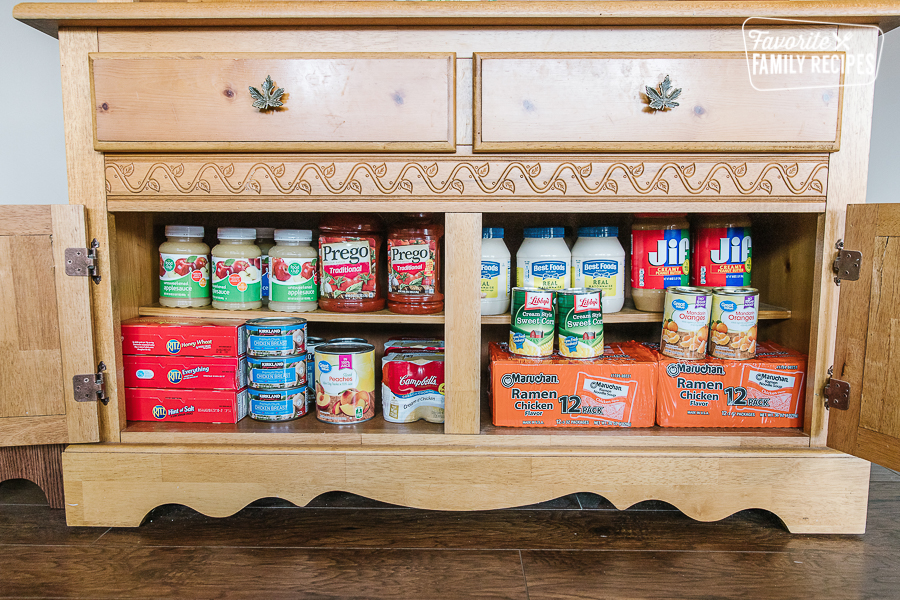
Click here for our 14 Day Shopping List and Meal Plan. This plan uses all non-perishable foods that can be stored for up to a year.
More Food Storage Links
Try some of these recipes and tips for building up your food storage.
Anything with a long shelf life such as grains, dried beans, rice, dried pastas, etc… work well for long term food storage. Also anything freeze dried, canned, or vacuum sealed with a long-shelf life works great.
Keep your food in pressure sealed cans or vacuum sealed bags to help maintain a longer shelf-life. Keep in a cool, dry place that is up off the floor.
The food that can be stored the longest is salt. Because of its mineral properties it can be stored forever.
